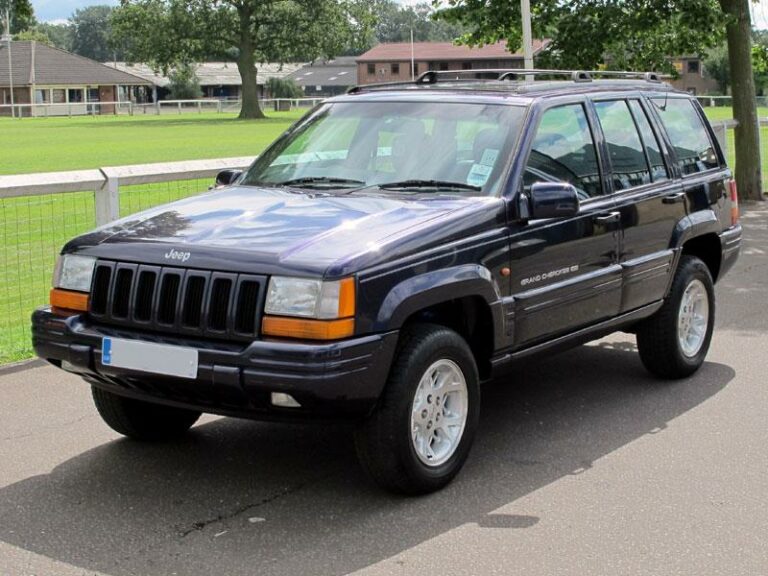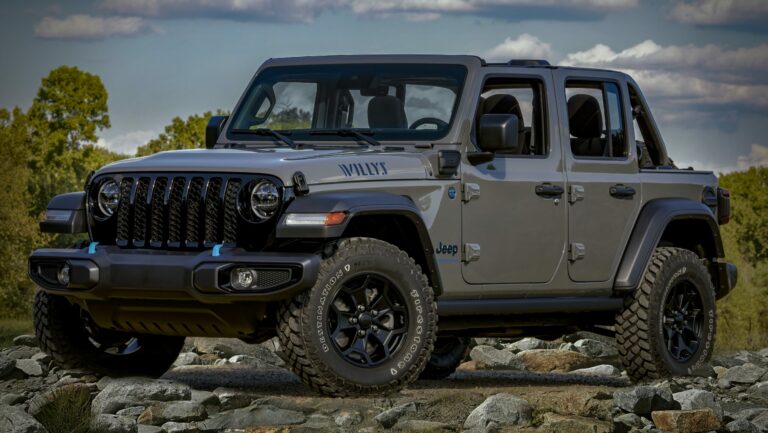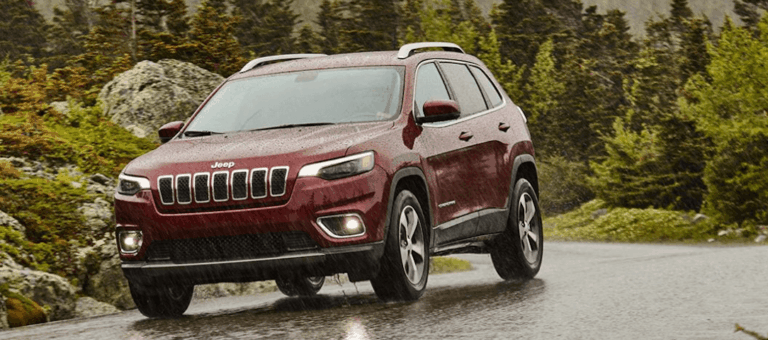Willys Jeep Cj3a For Sale: Your Comprehensive Guide to Owning a Legend
Willys Jeep Cj3a For Sale: Your Comprehensive Guide to Owning a Legend jeeps.truckstrend.com
The Willys Jeep CJ-3A is more than just a vehicle; it’s a rolling piece of American history, an icon of post-war utility, and a testament to rugged simplicity. For enthusiasts and collectors alike, the prospect of finding a Willys Jeep CJ-3A for sale isn’t just about acquiring a classic car; it’s about embracing a lifestyle, a mechanical challenge, and a connection to an era where vehicles were built for purpose, not just comfort. This comprehensive guide will navigate you through everything you need to know about purchasing and owning one of these legendary machines.
The Enduring Legacy of the Willys CJ-3A
Willys Jeep Cj3a For Sale: Your Comprehensive Guide to Owning a Legend
Born from the success of the military MB and the first civilian Jeep, the CJ-2A, the Willys-Overland CJ-3A was introduced in 1949. It represented a significant evolution in the civilian Jeep lineage, building upon the proven formula with key improvements aimed at enhancing its utility for farm work, light industry, and recreational use. The CJ-3A featured a slightly wider windshield for better visibility, a more comfortable driver’s seat, and a revised hood and grille. It retained the venerable "Go-Devil" L-head four-cylinder engine, renowned for its bulletproof reliability and ample low-end torque, paired with the robust T-90 three-speed manual transmission and Dana transfer case and axles.
Produced until 1953, the CJ-3A quickly became a symbol of versatility and American ingenuity. Its simple, durable design, combined with its impressive off-road capabilities, made it a favorite among farmers, ranchers, and outdoor adventurers. Today, its popularity endures, driven by a thriving community of enthusiasts, excellent parts availability (both new old stock and reproduction), and a timeless aesthetic that harks back to a simpler, more hands-on automotive era. Owning a CJ-3A is not just about driving; it’s about experiencing history and appreciating mechanical purity.
What to Look For: Key Considerations When Buying a CJ-3A
When searching for a Willys Jeep CJ-3A for sale, a discerning eye and a methodical approach are crucial. These vehicles are decades old, and their condition can vary wildly.
Condition is King
- Rust: This is the primary enemy of any vintage vehicle. Thoroughly inspect the frame, particularly where the body mounts, spring hangers, and crossmembers attach. Check the body tub, floorboards, hat channels (under the floor), fenders, and tailgate. Rust on a CJ-3A can be extensive and costly to repair.
- Engine Health: The "Go-Devil" is tough, but inspect for oil leaks, excessive smoke (blue indicates oil burning, black indicates rich fuel mix, white could be coolant), knocking sounds, and proper compression. Check the cooling system for leaks and proper function.
- Transmission and Drivetrain: Test the transmission through all gears (forward and reverse). Listen for grinding, popping out of gear, or excessive noise. Engage four-wheel drive (high and low range) and ensure the transfer case works smoothly. Check the U-joints and differential for play or leaks.
- Steering and Suspension: Look for excessive play in the steering wheel, which could indicate worn steering box, tie rod ends, or kingpins. Inspect leaf springs for sagging, cracks, or broken leaves. Check shock absorbers for leaks.
- Brakes: Ensure the brakes are functional and responsive. Test the parking brake.

Originality vs. Modifications

Decide if you want a purely original, historically accurate vehicle for restoration, or if a "restomod" (restored with modern upgrades) or a dedicated off-road rig suits your needs. Originality often commands a higher price but may require more specialized parts. Modified Jeeps can be more capable but scrutinize the quality of modifications.
Documentation
A clear title is paramount. Look for any available service records, previous ownership history, or notes on past repairs. This documentation can provide valuable insight into the vehicle’s life.
Common Problem Areas
Be aware of common issues such as worn kingpins in the front axle, cracked leaf springs, faulty electrical systems (often due to aged wiring), and fuel system contamination from old tanks. These are generally repairable but factor them into your budget.

Types of CJ-3A For Sale: Understanding the Market
The market for Willys Jeep CJ-3A vehicles is diverse, offering options for every budget and skill level.
- Barn Finds/Project Vehicles: These are typically non-running or very rough examples, often found in fields or garages. They represent the lowest entry point financially but require significant investment in time, money, and expertise for restoration. Ideal for experienced DIYers.
- Running & Driving Originals: These Jeeps are functional but may have cosmetic flaws, minor mechanical issues, or deferred maintenance. They offer a good starting point for a rolling restoration or a reliable weekend driver. Prices are moderate.
- Restored/Show Quality: These vehicles have undergone professional or meticulous amateur restorations, often to a high standard of originality or with tasteful upgrades. They are typically turn-key and command the highest prices, suitable for collectors or those who want a ready-to-enjoy classic.
- Modified/Off-Road Rigs: These CJ-3As have been enhanced for off-road performance, often with larger tires, lift kits, upgraded engines, or custom fabrication. Prices vary widely based on the quality and extent of modifications. Inspect these carefully for proper engineering and safety.
- "Farm Jeeps": Often well-used, these Jeeps may show signs of hard work but can be surprisingly mechanically sound due to consistent (if not always gentle) use. They might be cosmetically rough but represent a robust, honest example of the CJ-3A’s intended purpose.
The Buying Process: A Step-by-Step Guide
Securing your ideal Willys CJ-3A requires patience and diligence.
- Research Thoroughly: Understand the different sub-models, typical prices for various conditions, and common issues. Join online forums and owner groups to gather knowledge.
- Set a Realistic Budget: Beyond the purchase price, account for potential restoration costs, parts, tools, insurance, and ongoing maintenance. A rough project might cost $5,000-$10,000 to get running, while a full restoration can easily exceed $20,000-$30,000.
- Find Sellers: Look on dedicated classic car websites (e.g., Hemmings, ClassicCars.com), online auction sites (eBay, Bring a Trailer), general classifieds (Craigslist, Facebook Marketplace), and specialized Willys Jeep forums or clubs. Local car shows and swap meets can also yield leads.
- Initial Contact and Questions: Ask detailed questions about the vehicle’s history, known issues, rust, and any modifications. Request extensive photos and videos.
- In-Person Inspection: Never buy sight unseen if possible. Bring a knowledgeable friend or mechanic. Spend ample time inspecting every nook and cranny. Use a magnet to check for bondo.
- Test Drive: If the vehicle is running, take it for a comprehensive test drive. Listen for unusual noises, feel for vibrations, check steering, braking, and gear engagement.
- Negotiation: Be prepared to negotiate. Your leverage comes from your research and any issues you’ve identified during inspection. Don’t be afraid to walk away if the deal isn’t right.
- Paperwork: Ensure the seller has a clear title in their name. Complete a bill of sale that includes VIN, odometer reading, sale price, and condition. Understand your local requirements for title transfer and registration.
- Transport: Arrange for safe transport of your new acquisition, especially if it’s not roadworthy or is being shipped long distance.
Owning a CJ-3A: Tips for Maintenance and Enjoyment
Owning a Willys CJ-3A is a rewarding experience, but it comes with its own set of considerations.
- Basic Maintenance: These Jeeps are mechanically simple, making routine maintenance accessible to most owners. Regular oil changes, lubrication of chassis components, checking fluid levels (engine, transmission, transfer case, differentials), and battery checks are essential. Invest in a good shop manual.
- Parts Availability: The Willys community is robust, and parts availability is surprisingly good. Many original new old stock (NOS) parts can still be found, and numerous companies reproduce virtually every component, from body panels to engine internals.
- Community: Join Willys Jeep clubs and online forums. These communities are invaluable resources for advice, technical support, parts sourcing, and camaraderie.
- Driving Experience: Understand that a CJ-3A drives differently from modern vehicles. It’s slower, louder, and lacks power steering, power brakes, and modern safety features. Embrace its rugged charm and drive defensively. It excels off-road but is less suited for highway cruising.
- Insurance: Consider classic car insurance, which often offers better coverage and lower premiums than standard auto insurance for vintage vehicles, especially if you plan limited mileage.
Potential Challenges and Solutions
Even with careful selection, owning a vintage vehicle like the CJ-3A can present challenges.
- Rust: If present, address rust promptly. For minor spots, sandblasting and patch welding may suffice. For extensive rust, replacement body panels or even a full reproduction body tub might be necessary.
- Mechanical Issues: While simple, components can wear out. Invest in good tools and a shop manual. Many repairs can be DIY. For more complex issues (e.g., engine rebuilds), seek out a mechanic specializing in vintage vehicles. Engine swaps to more modern, powerful, or fuel-efficient units are also common for those prioritizing drivability over originality.
- Safety: The CJ-3A lacks airbags, crumple zones, and seatbelts (often only lap belts). Drive cautiously, avoid high speeds, and consider adding three-point seatbelts if not already present.
- Comfort: Long drives can be fatiguing. Solutions include upgrading seats, adding sound deadening material, or installing a more robust suspension for a smoother ride.
Willys Jeep CJ-3A Estimated Price Guide
Prices for Willys Jeep CJ-3A vehicles can fluctuate significantly based on condition, originality, modifications, and market demand. This table provides a general estimation.
| Condition Category | Description | Estimated Price Range (USD) | Key Factors Influencing Price |
|---|---|---|---|
| Project/Parts Vehicle | Non-running, heavily rusted, incomplete, or requiring extensive restoration. May be missing major components or have a questionable title. Suitable for experienced restorers or as a donor vehicle. | $2,000 – $7,000 | Low: Significant rust, missing drivetrain, no title, severe body damage. High: Mostly complete, less severe rust, clear title, potential for restoration. |
| Running & Driving | Functional but with significant cosmetic flaws, some rust, and likely deferred maintenance. May have minor mechanical issues but is drivable. Good for a rolling restoration or a rustic daily driver. | $7,000 – $15,000 | Low: Rough paint, noticeable rust (but frame solid), some mechanical issues, basic functionality. High: Solid frame, minor rust, mostly original, runs and drives well with minimal issues, clear title. |
| Good Condition/Driver | Mechanically sound, minimal rust, presentable paint and interior (may not be perfect). Could be an older restoration or a well-maintained original. Suitable for regular enjoyment, local shows, or light off-roading. | $15,000 – $25,000 | Low: Older paint showing age, minor cosmetic flaws, perhaps some non-original parts. High: Excellent mechanicals, very little rust, good paint, mostly original or well-executed minor upgrades, reliable. |
| Restored/Show Quality | Professionally restored or meticulously maintained to a very high standard of originality or with tasteful, high-quality modifications. Excellent paint, pristine interior, rebuilt drivetrain, often museum-quality. | $25,000 – $45,000+ | Low: High-quality amateur restoration, near-perfect condition, well-documented history. High: Professional, concours-level restoration, documented originality, rare features, exceptional attention to detail, awards, or significant historical provenance. Some exceptional examples can exceed $50,000. |
| Modified Off-Road Rig | Heavily modified for extreme off-roading with upgraded suspension, drivetrain, engine swaps, roll cages, etc. Condition and value depend entirely on the quality, safety, and extent of the modifications. | $8,000 – $30,000+ | Low: Home-built, questionable modifications, rough finish. High: Professionally built, high-quality components, well-engineered, reliable, excellent performance. |
Note: These are estimates. Market conditions, geographic location, seller motivation, and specific vehicle history can significantly impact actual sale prices.
Frequently Asked Questions (FAQ)
Q: Is the Willys CJ-3A a good daily driver?
A: Generally, no. While incredibly rugged, the CJ-3A lacks modern amenities, safety features, and highway speed capabilities. It’s best suited for weekend cruising, off-road adventures, farm work, or as a classic vehicle hobby.
Q: Are parts hard to find for a CJ-3A?
A: Surprisingly, no. Due to its popularity and the robust aftermarket, almost every part for a CJ-3A is available new, either as a reproduction or new old stock (NOS). Specialized Willys parts suppliers are abundant.
Q: What’s the top speed of a CJ-3A?
A: With its original "Go-Devil" engine, a CJ-3A typically has a top speed of around 50-55 mph (80-88 km/h), though this can vary with gearing, tire size, and engine condition. It’s not designed for high-speed highway travel.
Q: How much does it cost to restore a CJ-3A?
A: Restoration costs vary widely. A basic "driver" restoration might be $10,000-$20,000 on top of the purchase price, while a full, professional, show-quality restoration can easily exceed $30,000-$50,000, depending on the initial condition of the vehicle and the desired level of perfection.
Q: Can I put a modern engine in a CJ-3A?
A: Yes, engine swaps are a popular modification for CJ-3As, especially for those seeking more power, reliability, or fuel efficiency. Common swaps include small-block V8s (like Chevy 350), modern inline-fours, or even diesel engines. However, this involves significant fabrication and modification to the drivetrain and chassis.
Q: What’s the difference between a CJ-2A and a CJ-3A?
A: The CJ-3A (1949-1953) was an evolution of the CJ-2A (1945-1949). Key differences include a one-piece windshield (vs. split on CJ-2A), an external fuel filler cap (vs. under-seat on CJ-2A), a slightly lower hood, and a revised instrument panel. The CJ-3A also had a slightly softer ride due to spring changes.
Conclusion
The Willys Jeep CJ-3A is more than just a vehicle for sale; it’s an invitation to own a tangible piece of automotive history. Its rugged charm, mechanical simplicity, and undeniable character make it a highly desirable classic. Whether you’re seeking a project to pour your passion into, a reliable weekend cruiser, or a meticulously restored showpiece, the CJ-3A offers a unique and rewarding ownership experience. Approach your search with knowledge, patience, and a sense of adventure, and you’ll soon discover why this iconic Jeep continues to capture the hearts of enthusiasts worldwide. Owning a CJ-3A isn’t just about driving; it’s about connecting with a legacy of utility, freedom, and timeless American engineering.




